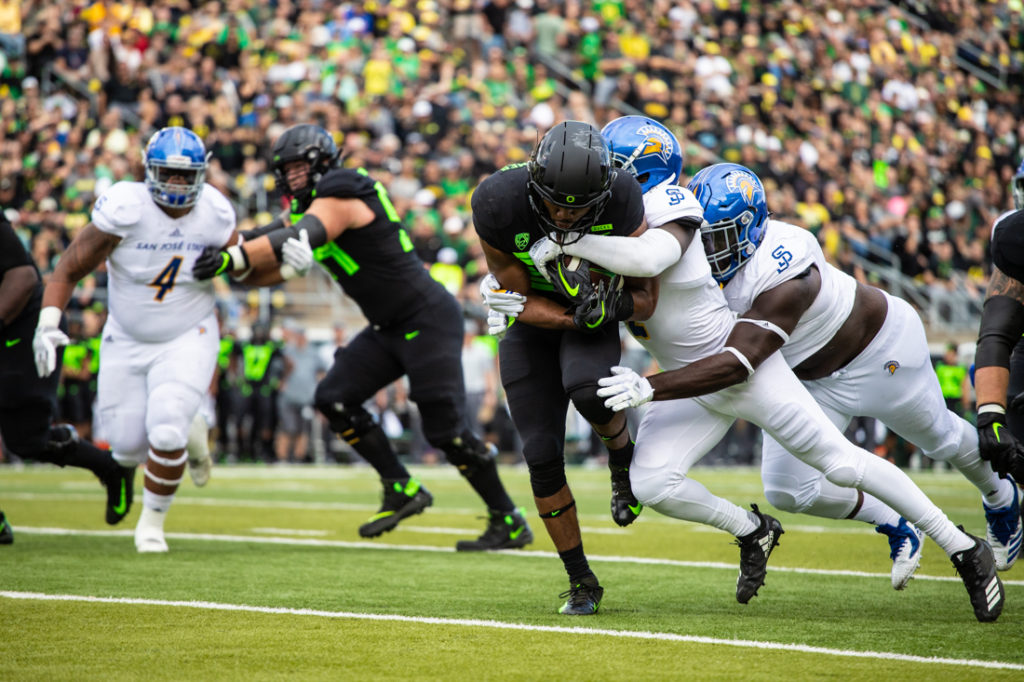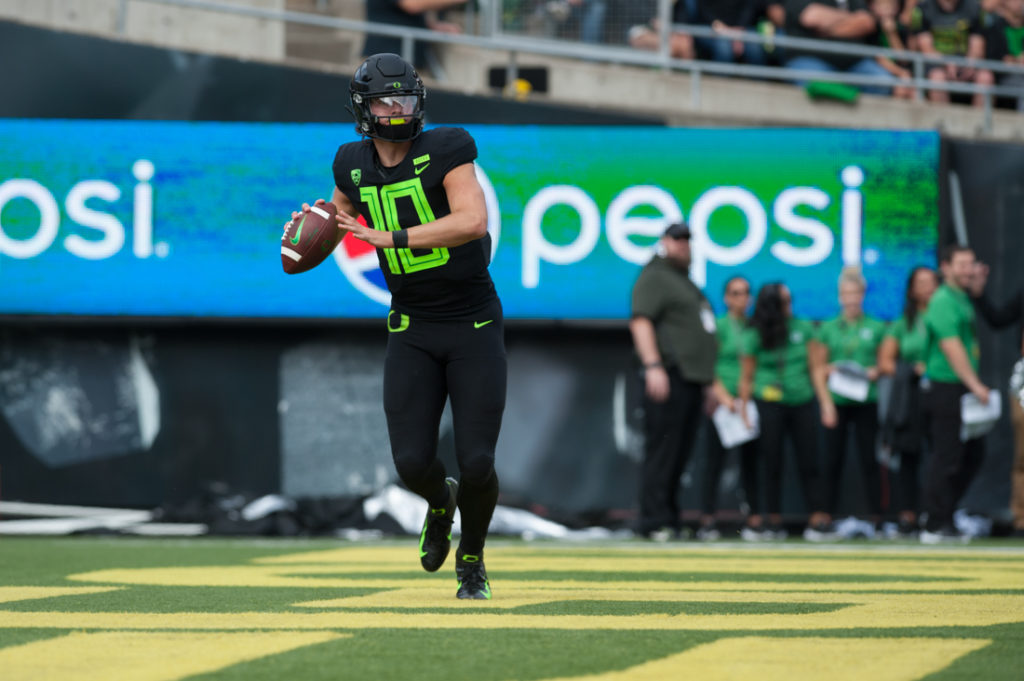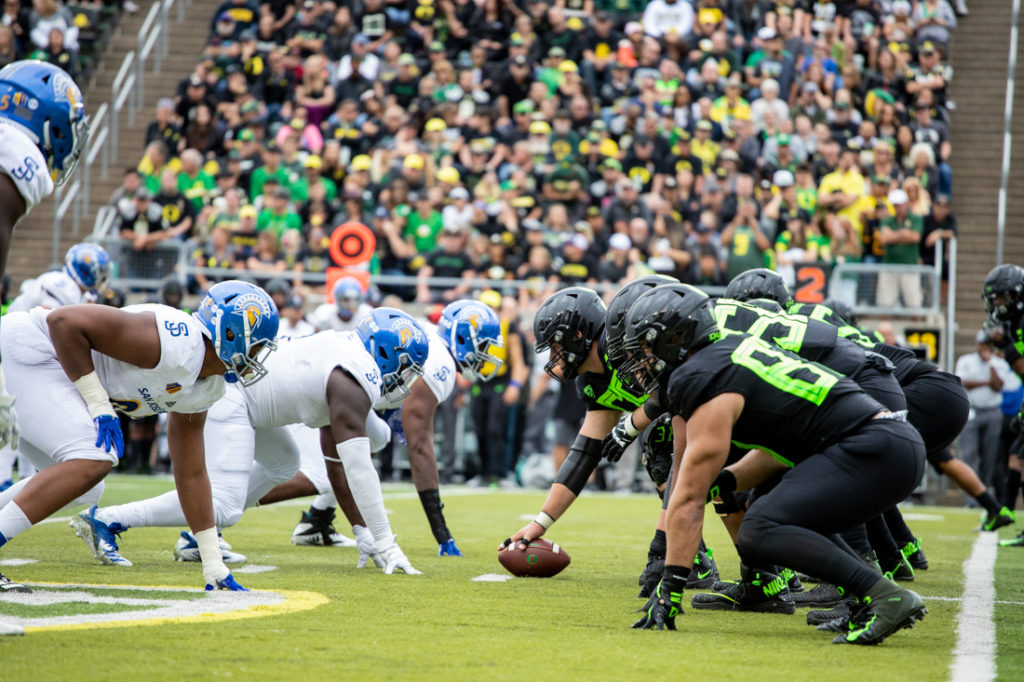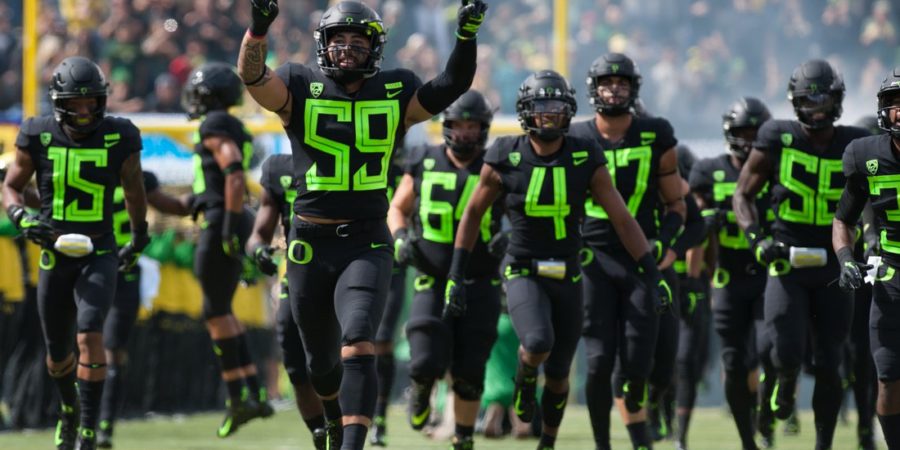It was right around this time last week that we sat down and considered the biggest questions for the Ducks heading into their final non-conference game against the hapless San Jose State Spartans.
With victory for Oregon all but sealed away, we wondered who might earn the start at wide receiver between Johnny Johnson and Brenden Schooler, whether or not true freshman Tyler Shough might see extended playing time, etc. It was a game that was supposed to be a confidence and momentum builder heading into what is accurately being billed as the biggest game for Oregon in over two seasons, as they prepare to take on 7th-ranked Stanford this Saturday.
Instead, it was a game that offered up far more questions than answers. The Ducks slogged their way to an unimpressive 35-22 win over the Spartans, which has only added doubt as to how far this team has come from the moment the 2017 campaign ended ’til now.
Below, WFOD contemplates the biggest questions for the Ducks heading into Saturday’s game versus Stanford.

1. Are the rushing woes a mirage or a concerning sign of things to come?
It would be disingenuous to say that Oregon’s lack of pop in the running game is a surprise. After all, rarely do you replace a guy like Royce Freeman with another player who steps in and is capable of playing at an All-American type level. Still, the ground game for the Ducks has been missing the electricity that’s been commonplace at the position for the past decade and change. Part of that has been a positional logjam that currently features six scholarship backs who have largely redundant skill sets. Yes, Cyrus Habibi-Likio has seemingly solidified his role as Oregon’s goal line back, but Tony Brooks-James, CJ Verdell, Travis Dye, Darrian Felix, and Taj Griffin each share common traits that have yet to mesh with the Ducks’ shift towards a more power-oriented rushing attack.
The other concerning element has been the offensive line’s inconsistency in opening holes for those aforementioned players. Entering last week’s game versus San Jose State, the Ducks averaged 5.7 yards per carry on the ground – a healthy figure all things considered, but one that feels a little low considering the level of competition the Ducks had faced to that point (only twice this season have the Ducks produced a 100-yard rusher, as Brooks-James and Verdell each went over the 100-yard mark versus Portland State). Against San Jose State, that number slid to a paltry 2.7 yards per carry, as the Ducks had fits with the Spartans’ veteran defensive line.
Have the first three games been the result of a lack of motivation going up against inferior opponents, or are there deeper issues to consider? With the Cardinal headed to Eugene, the Oregon rushing attack will face its stiffest test to date. Their performance could potentially be the difference between victory or defeat.

2. Can Justin Herbert count on his receivers?
More so than the running back group, the Oregon receiving corp has arguably been the most mercurial unit of any on the Oregon roster. Justin Herbert has shown a willingness to spread the ball around to number of different targets (7 different pass catchers have scored at least one touchdown this season), but no one has come forth as the go-to weapon in this offense. Furthermore, just about every receiver in the group has fought a nasty case of the drops this season. The team’s top two receivers statistically this season, Johnny Johnson and Jaylon Redd, have been perhaps the biggest culprits of dropped passes. Meanwhile the team’s most talented and proven receiver, Dillon Mitchell, has been eerily quiet through three games.
Facing a skilled Stanford secondary, there will be little margin for error in the form of wandering focus or poorly executed fundamentals. And whether he’d admit it or not, the drops and overall inconsistency has to be a source of frustration for Herbert. Ultimately, his own play is impacted as a result, as a lack of confidence in his playmakers can breed a doubtful mindset going into to every throw. If there were ever a time for Oregon’s wide receivers to snap out of their funk, this would be the game.

3. Will we see anything new from a personnel or philosophical standpoint?
Anytime a team a far superior team plays a far inferior opponent in college football, the age old question of, “Is [insert team name] watering down the playbook?” is asked. And it’s a fair question to a degree, as it only makes sense to avoid putting on film for future opponents the entire width and breadth of your offensive or defensive scheme, particularly against a team you could easily beat with only a handful of plays. Which begs the question, “What might we see from Oregon on Saturday that we haven’t already seen this season?”
Certainly, the Ducks’ first three opponents this season would qualify as opponents you’re not exactly digging into the deepest recesses of your playbook in order to game plan for. And quite frankly, based on some of what we’ve seen from the Oregon offense thus far, you really hope they haven’t. This is particularly true as it relates to the Oregon passing game, which has looked brilliant at times with Herbert serving as the triggerman, but has generally lacked creativity and variety in both route concepts and play calling. Against Stanford, it’ll be curious to see if the passing game notably expands beyond short dump offs to backs and tight ends and deep shots down field.

